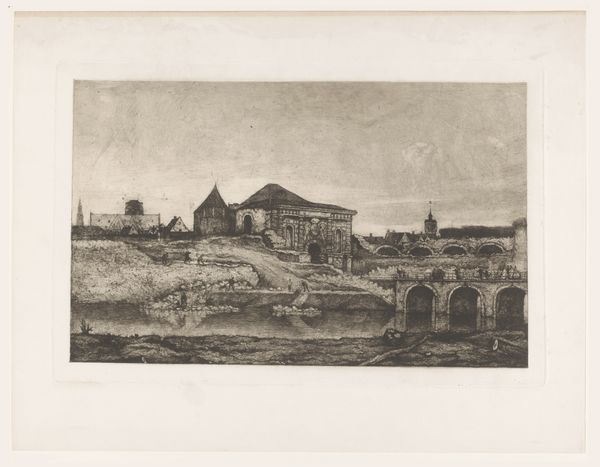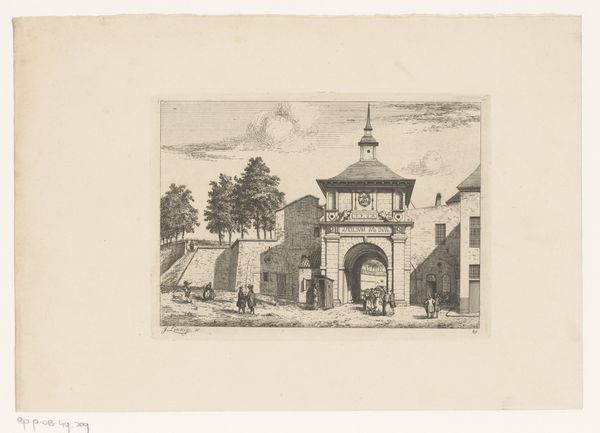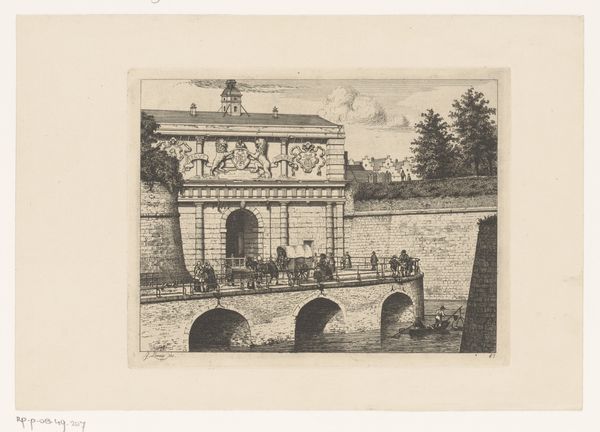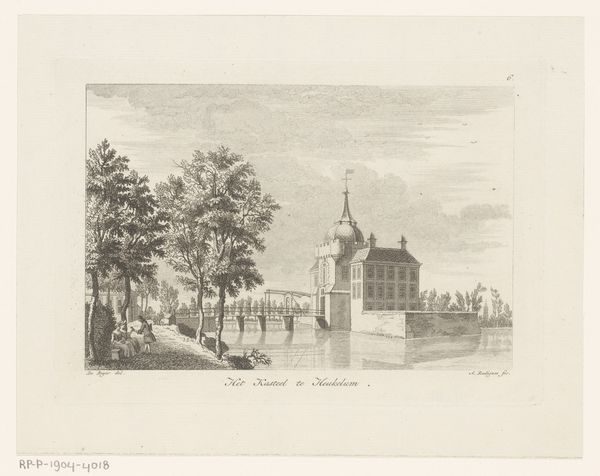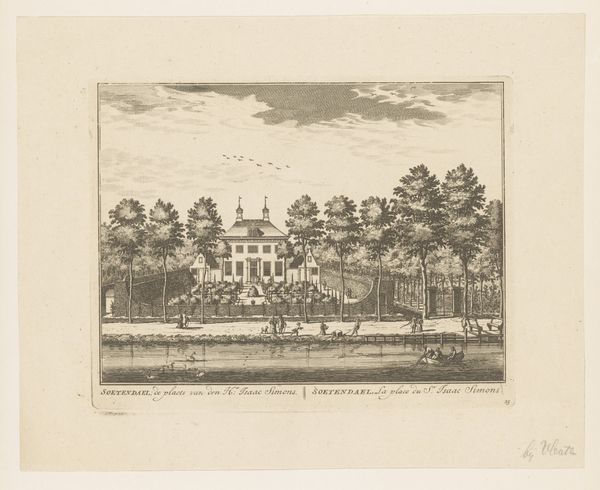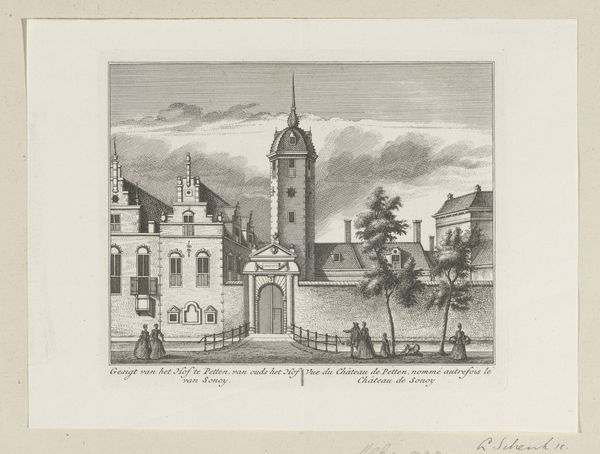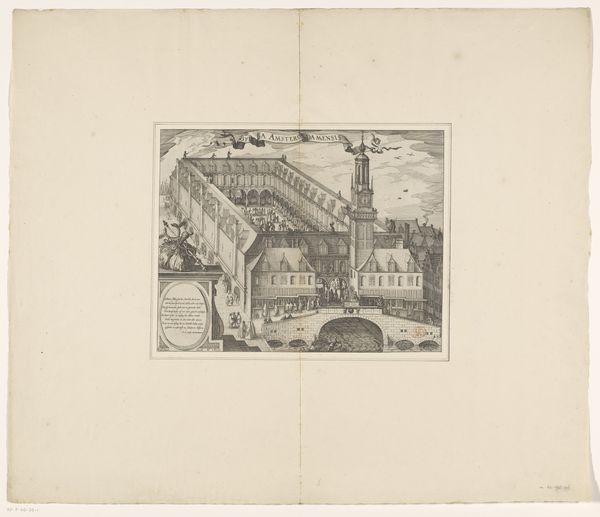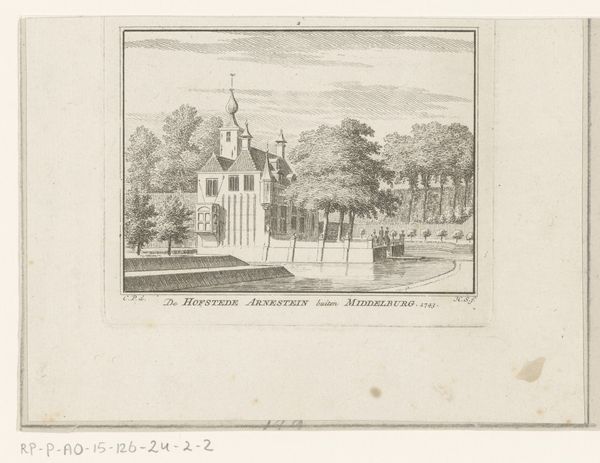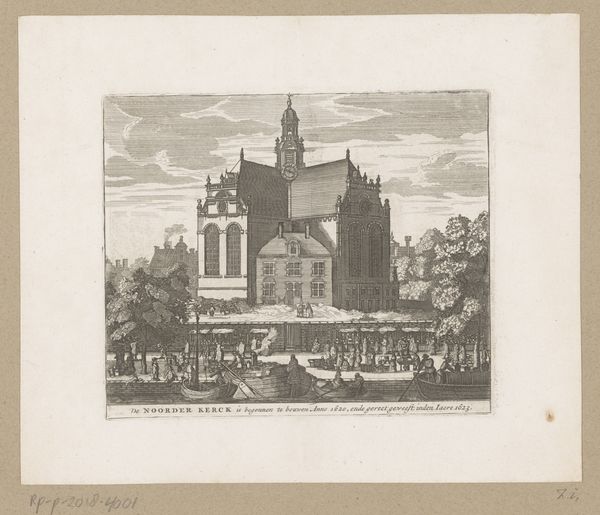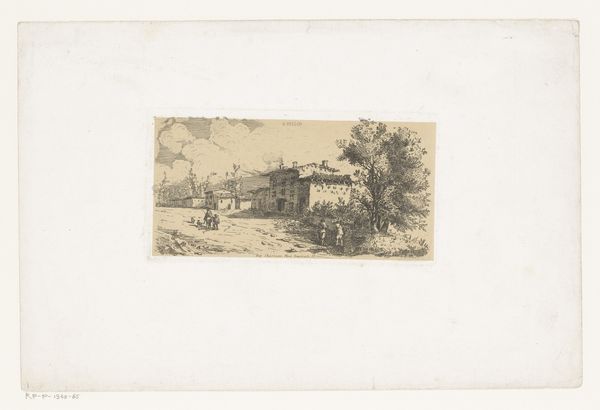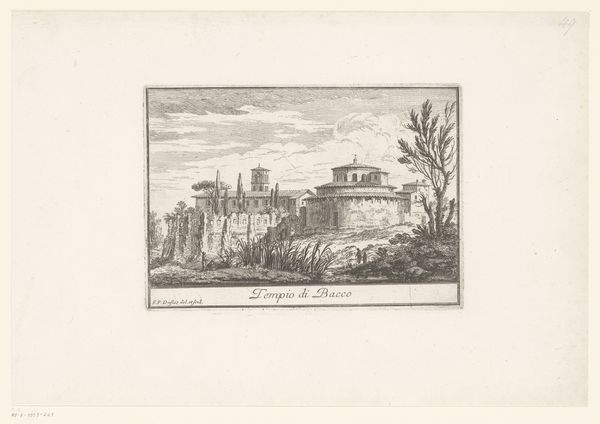
Dimensions: height 135 mm, width 187 mm
Copyright: Rijks Museum: Open Domain
Curator: We’re looking at Jean Théodore Joseph Linnig's "View of the Kipdorp Gate in Antwerp," created in 1868 using etching on paper. Editor: The atmosphere here is quite solemn. The somber tonality across the piece creates a real sense of austerity. It makes me think about ideas of state power and surveillance. Curator: Absolutely. Considering the Baroque architectural elements with those robust stone arches and the ornamental gate, you get this immediate impression of authority, almost rigidity. Notice how the etching emphasizes line, giving distinct definition to each brick and architectural flourish. Editor: Right. I’m curious about the social context in Antwerp at the time. What power dynamics are reflected in the depiction of this city gate? How accessible would this gate have been, and to whom? These structures were powerful symbols defining who belonged and who was excluded. Curator: A worthwhile point. But observe also the rendering of space—Linnig positions the viewer to capture not just the gate but the surrounding structures and landscape, allowing for an examination of urban planning and visual representation of 19th-century Antwerp. How do you view the compositional strategies here? Editor: The choice to present a somewhat limited and constrained view does draw focus to questions of power and limitation. Who were the gatekeepers then and who are they now? The somber mood it creates asks for accountability. Curator: That is a powerful reading. Ultimately, the print achieves its significance through careful consideration of its structural components, which, when fully examined, highlight Linnig's technical mastery of the etching process. Editor: Perhaps. For me, engaging with the art involves asking questions, encouraging dialogues, and challenging the very systems it represents. Curator: Precisely, its structural intricacies invite us to consider its complexities beyond mere representation. Editor: Absolutely, and by acknowledging these multilayered interpretations, we enrich our understanding of art's function as both an historical object and contemporary social commentary.
Comments
No comments
Be the first to comment and join the conversation on the ultimate creative platform.
